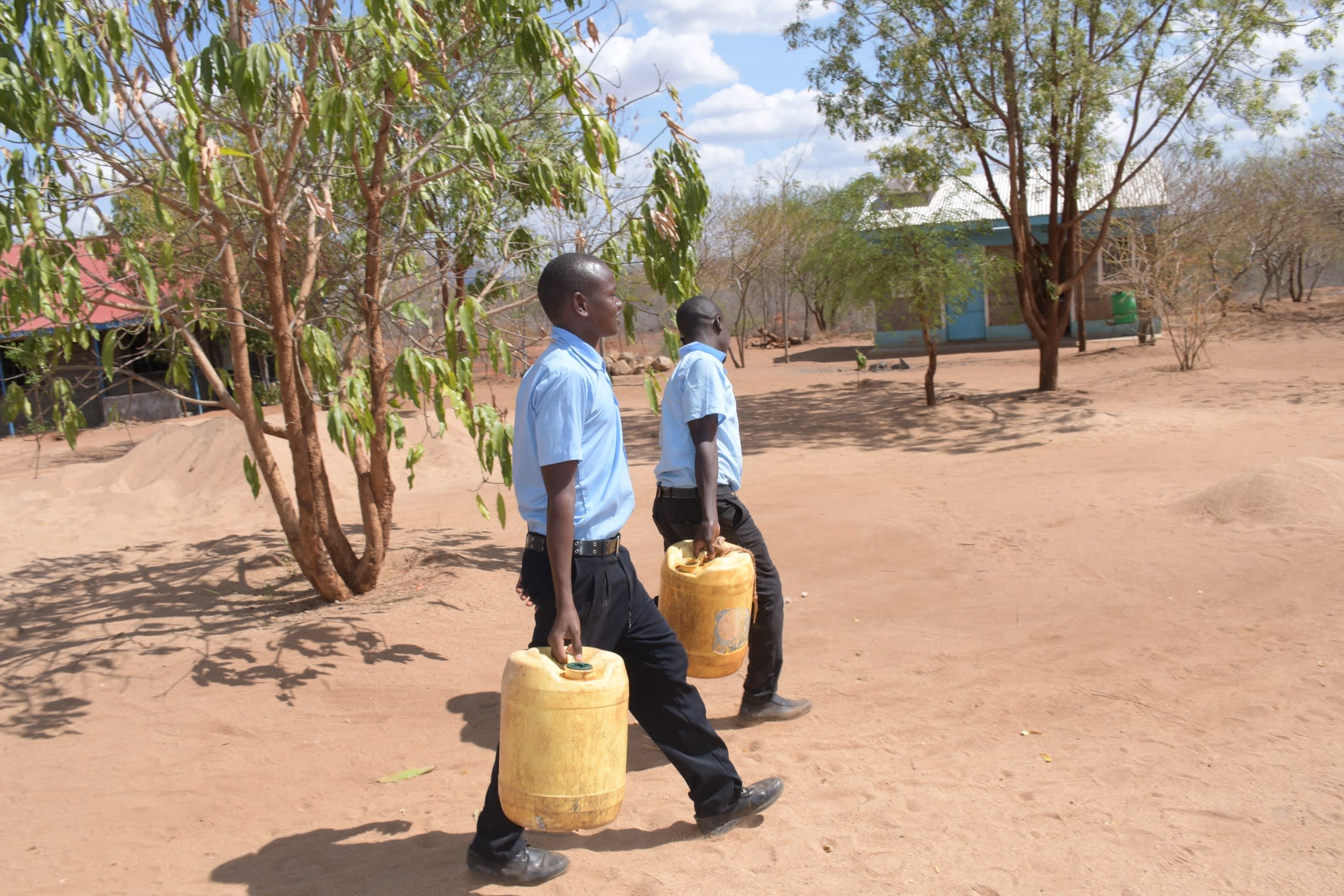For the 166 students and staff of Kiviu Secondary School, having access to sufficient water is a significant challenge they must face every day.
The school's plastic rainwater tanks, which drain into a small cement catchment box, only have a capacity of 59,000 liters. Therefore, they cannot hold enough water for all the school's needs, like drinking and cooking meals. Insufficient water also means classrooms are rarely cleaned, and students studying in the agriculture program get disappointing national exam scores.

The school's tanks inevitably run dry, especially during peak drought periods, causing the school administration to rely on a local water vendor or parents ferrying water by donkey from scoop holes. But even still, it is not enough. So ultimately, students suffer, finding it difficult to concentrate because they are thirsty and hungry.
"When there is no water within the school, the meals are delayed, and I have to resume the afternoon class while thirsty and hungry under the intense semi-arid heat," said 17-year-old Jane K.
Jane continued: "I was also sick last month from typhoid after drinking the water from the vendor. I had to seek medication at Mwingi Hospital before resuming my classes."
"During the common drought periods, there is inadequate water for drinking and cooking. When the tanks run dry, we have to purchase from vendors, which can be costly. The vendor is unreliable because there are times she comes late, leading to delays in meal preparation," shared 50-year-old deputy headteacher John Kimanzi.
"My students are affected by poor hygiene and sanitation because [our] water is used sparingly; thus, the latrines and classes are cleaned often [only] once per term. The unconducive learning environment caused by [the] acute water shortage has culminated into dismal academic performances," concluded Mr. Kimanzi.

The installation of a much larger rainwater tank can hopefully allow the school to collect sufficient water during the rainy season to improve sanitation throughout the year. Then, students will have plenty to drink and eat so they can focus on studying.
Rain Tank
We will build a 104,000-liter rain tank for this school, making the others look tiny in comparison. Because of how rarely it rains in Southeastern Kenya, this tank's large volume is designed to store as much water as possible during the seasonal rains, making more water available through the dry months. This water will benefit the students, teachers, and supplementary staff.
Parents will mobilize the materials needed for construction, including sand, stones, and water. They will also lend their strength and time to help with the construction. We will complement their materials with a skilled artisan to lead the project in addition to providing the tools, lumber, metal, cement, and gutter system.
As soon as the tank has time to cure, it can begin collecting rainwater for the school's use.
Training
We will train students and staff on sanitation, hygiene, and other topics for 1 day. Those in attendance will form a school health club that will promote good hygiene and sanitation practices both at school and at home. They will learn all of the steps to proper handwashing, how to treat water, and how to keep their environment clean. The school will also be taught how to best oversee and maintain their new rain tank and handwashing stations.
Handwashing Stations
A total of 3 handwashing stations will be installed upon the project’s completion and before training. These are 1,000-liter plastic tanks fitted with 3 taps each, allowing 9 students to wash their hands at once. The student health club and school management will be responsible for making sure the tanks are filled with water and that a cleaning agent such as soap or ash is always available.

 Rainwater Catchment
Rainwater Catchment
 Rehabilitation Project
Rehabilitation Project































